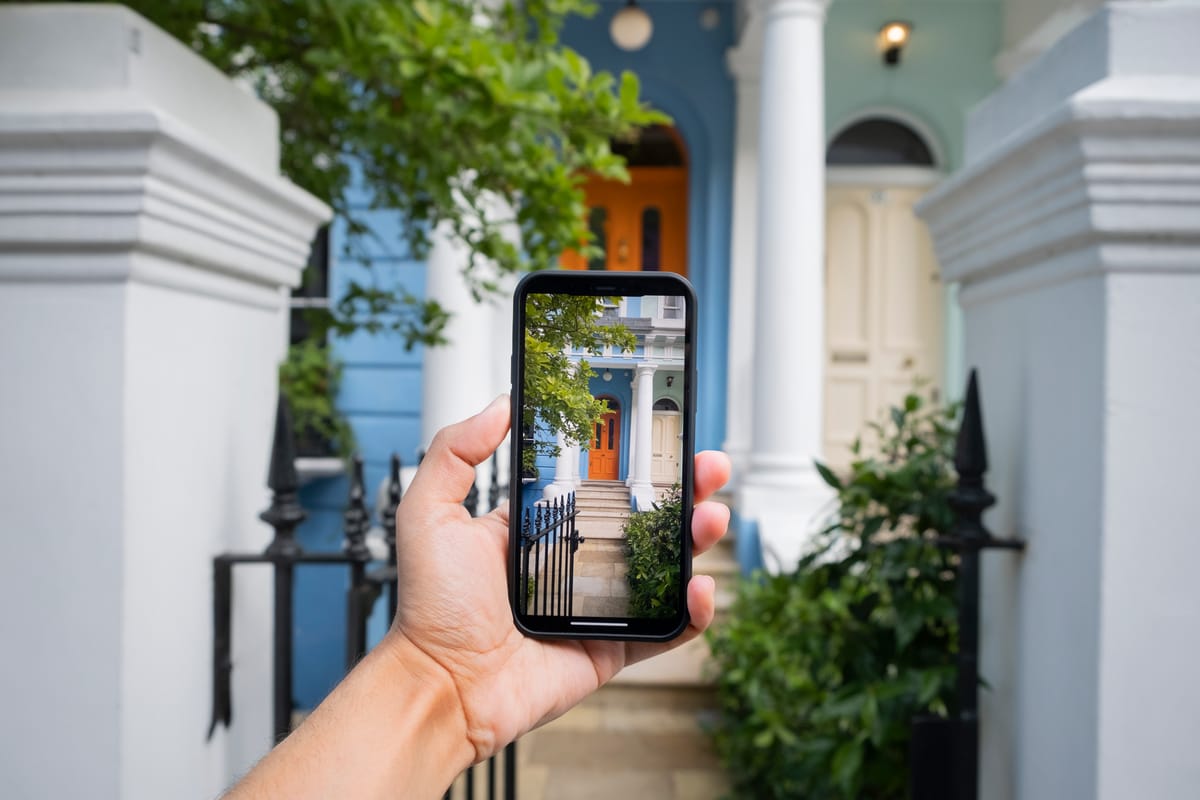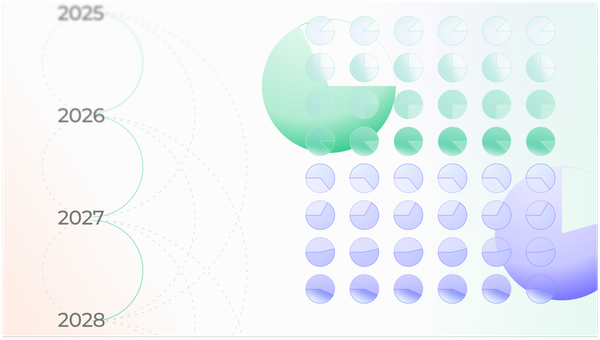Whether planning the largest purchase of their life or dreaming of a brighter future, real estate app users seek a personalized blend of information.
In an episode of the Brene Brown podcast, writer Sue Monk shared an insightful quote: "The deeper we delve into our own unique journeys and experiences, the more likely we are to unearth the universal truths that bind us all."
This observation, initially framed within the context of faith and spirituality, holds profound relevance for user-centric endeavors. It highlights the transformative power of immersing ourselves in the specific contexts, frustrations, and behaviors of individuals. As UX researchers, by genuinely understanding how our users interact with our products and incorporating their personal narratives, we help businesses and product development professionals create compelling, user-driven experiences that surpass the ordinary.
In our recent research on real estate apps, we invited users to navigate their preferred apps and replicate typical searches while recording their user experience. We captured feedback in the form of videos and surveys, gathering rich qualitative data. By looking at these experiences, we learn what matters most when people use apps to make highly personal, high-cost purchasing decisions. As we dove into the data, a recurring theme emerged: users seek a more personalized user experience making life-changing decisions.
One Real Estate App Does Not Rule Them All
While most users had a preference for one real estate app or the other, 80% indicated that they would often use two or more apps on a regular basis, and 39% reported using four or more apps in their home searches! The use of multiple apps stemmed from several factors:
- Access to more listings: Users noted that not all apps list every available property, so they used multiple apps to access a wider range of listings.
- Comparing valuations: Users sought to compare property valuations across multiple apps to gain a more accurate assessment of market value. This comparison helped them make informed decisions about pricing and negotiation strategies.
- Recommendations from others: Users often relied on recommendations from friends, family, or real estate agents when choosing which apps to use. Positive word-of-mouth played a significant role in app selection.
Although the market has cooled, good quality and competitively priced homes still go off the market fast, so it is unsurprising that nearly half of all potential buyers and renters utilize a real estate app on a daily basis.
In addition to the aforementioned reasons, users of multiple real estate apps were trying to address two primary concerns: supplementing information gaps and taking advantage of unique information different apps offer.
For users who sought to fill information gaps by cross-referencing data across multiple apps, they felt this approach ensured they had a comprehensive understanding of available properties.
“Between the two I get all the information for an informed decision!”
A user explains why Realtor is good for finding a listing and Zillow for neighborhood info.
—Dylan, Gen Z, Kentucky
Users also recognized that different apps provided unique information or excelled with specific user experience features. For instance, Trulia's demographic data about neighborhoods was highly valued, while Realtor.com's "draw an area on the map" search feature was considered particularly useful. Many users appreciated Zillow's satellite views of different neighborhoods.
I've always seen Zillow as the main one probably due to it being the most popular, but I like the features on realtor.com so I use it a lot too.”
—Jesse, Millennial, Tennessee
This reliance on multiple apps to obtain a holistic view of properties presents a challenge for app owners and their product development strategy, as it can lead to user churn.
Here are what a few users have to say about why they use multiple apps:
“I use multiple apps because they all offer different information about a property. To get everything I need from one site it would have to be extremely detailed about the house, neighborhoods, surrounding amenities, etc.”
—Lindsey, Millenial, Ohio
“Because some apps have unique features, property listings, or user interfaces that cater to my preference. To consolidate everything into one real estate app, a comprehensive and user-friendly platform would be key.”
—Theresa, Millenial, North Carolina
Homebuyers Seek Comprehensive Neighborhood Insights
In the quest for their ideal home, discerning buyers and renters are seeking more than just a detailed description of the property itself. They desire to immerse themselves in the nuances of the surrounding neighborhood and understand the lifestyle, amenities, demographics, and potential living expenses that will shape their daily experiences.
“I do feel after doing this that in order for me to have a complete picture, I'd need more information about the neighborhoods and environment. When buying a house, most people aren't focused on only the physical home. You're also purchasing neighbors, a neighborhood, and a location. It's easy to find every detail about the house/apartment/etc. itself, but it's more difficult to find information about what kind of lifestyle you might expect from living there.”
—Amber, Millenial, North Carolina
While current real estate apps excel at showcasing the interiors and exteriors of properties, providing 3D tours, and listing an array of amenities, they often fall short in delivering a comprehensive picture of the neighborhood. This forces users to navigate multiple platforms, piecing together information like a jigsaw puzzle. This disjointed experience can lead to confusion, uncertainty, and a longer decision-making process when it comes to choosing their next home.
“Instead of just points, I like reading a narrative style description of the neighborhood.”
A user explains why they like reading a narrative style of neighborhood that Realtor.com provides.
—Charmanine, Gen X, Georgia
Homebuyers and renters want to envision their routines within the context of the neighborhood's rhythm. To do this, they need to understand traffic patterns, the accessibility of public transportation, the proximity of schools and workplaces, and the availability of recreational facilities. They delve into the demographic makeup of the area, seeking to gauge the social fabric and cultural tapestry that will define their daily interactions.
The lack of a centralized hub for neighborhood information poses a significant challenge for users. This fragmented approach necessitates a time-consuming and often frustrating journey across multiple apps, each offering a piece of the puzzle but failing to provide a cohesive perspective, as described by a user from California:
“I love Zillow, and usually use it. But one of the frustrations I have with the app is that the information often isn't standardized , and I have to supplement it with my own searches. it's hard to get a genuine feel for how the neighborhood is and who lives there. It's great for fantasy searches, but when looking for an actual apartment, I find myself frustrated by all of the variables and I spend a longer time combing through listings to get the information that I need.”
—Zharia, Millennial, California
Transforming the Home Search with User-Centric Personalization
In the quest for their ideal home, users are not only seeking a well-designed and intuitive app but also one that can be personalized to meet their specific needs and preferences. This desire for customization stems from the recognition that each individual's home-seeking journey is unique, shaped by multiple factors.
“After entering in the filter information it was super hard to locate the listings. They all appeared as green icons on a map... the search was not presented in a more digestible listing format.”
—Catherine, Gen X, New York
For users this means the ability to switch between map, list, and card views, the freedom to decide how much property information they see, and even customize the app's language and style. This level of control can empower users to tailor the app to their own unique way of browsing and evaluating properties. App owners can leverage UX research to learn which features can bring the greatest impact to their core user base.
“This does not have the filters I want.”
User explains why she is unable to filter based on price on apartments.com, where listings are more, but will need to check price on Zillow.
—Jazmine, Millennial, California
Real estate apps that are making investments in personalization offer users a variety of ways to customize their experience. Zillow, for instance, allows users to create custom saved searches and receive recommendations based on their browsing history. Trulia enables users to look at neighborhood maps based on demographics. Realtor.com provides users with the ability to toggle between list and card views and adjust the level of detail.
“One has better info, the other is easier on the eye!”
A user explains why she gets better information from Realtor.com, but Zillow's minimal interface helps it easy to find information.
—Clara, Gen Z, Illinois
Key Strategies for App Experiences Geared Towards High Value Purchases
By looking at apps through the lens of real estate app users, we see critical ways app owners can better connect with their users, especially for user experiences around high value purchases. We've seen the importance of specific user behaviors, frustrations, and universal truths, and here are 3 key takeaways for UX researchers and app owners looking to create more compelling user experiences:
- Prioritize app personalization and customization: Users seek to use apps that can be tailored to their unique needs and preferences, especially for high-dollar, life-changing purchases. Granular filtering options, customizable search criteria, and flexible display preferences can empower users to navigate apps with control and efficiency. By embedding personalization in your product development roadmap, you can cater to the diverse preferences of individual users.
- Provide information beyond the purchase item itself: When making a high-dollar purchase, many users want to know how it will impact their life. In the context of real estate, this looks like comprehensive demographic data, lifestyle insights, and neighborhood reviews that allow users to envision their daily lives within the community. By offering lifestyle context, apps can go beyond product listings and become trusted guides for navigating a life-changing purchase.
- Integrate interactive features and virtual tours: Users seek immersive experiences that allow them to explore big-ticket items virtually. This can include 3D tours and AI-powered tools to enhance engagement, facilitate informed decisions, and reduce the need for physical site visits. By incorporating interactive features, app owners and product development professionals can bridge the gap between online browsing and real-world experiences.
Executing UX research for the distinct needs of users allows businesses and product development professionals to create a more engaging user experience. Pulse Labs FlightRecorder offers rich, cost-effective, in-context video of your users' experiences on your app.
Want to learn more about the tools we use for our research and how they can help you power your product design and user experience?
Stay tuned for more insights from Pulse Labs IQ™ and sign up for our newsletter.








Member discussion